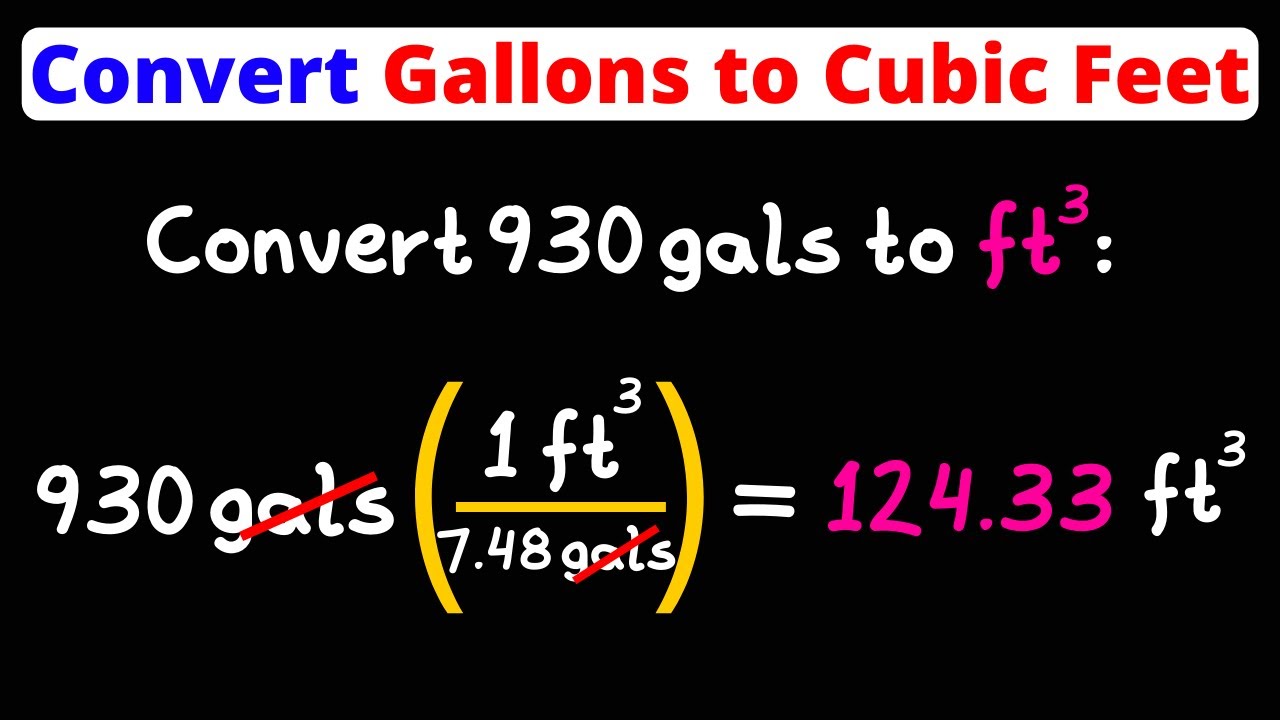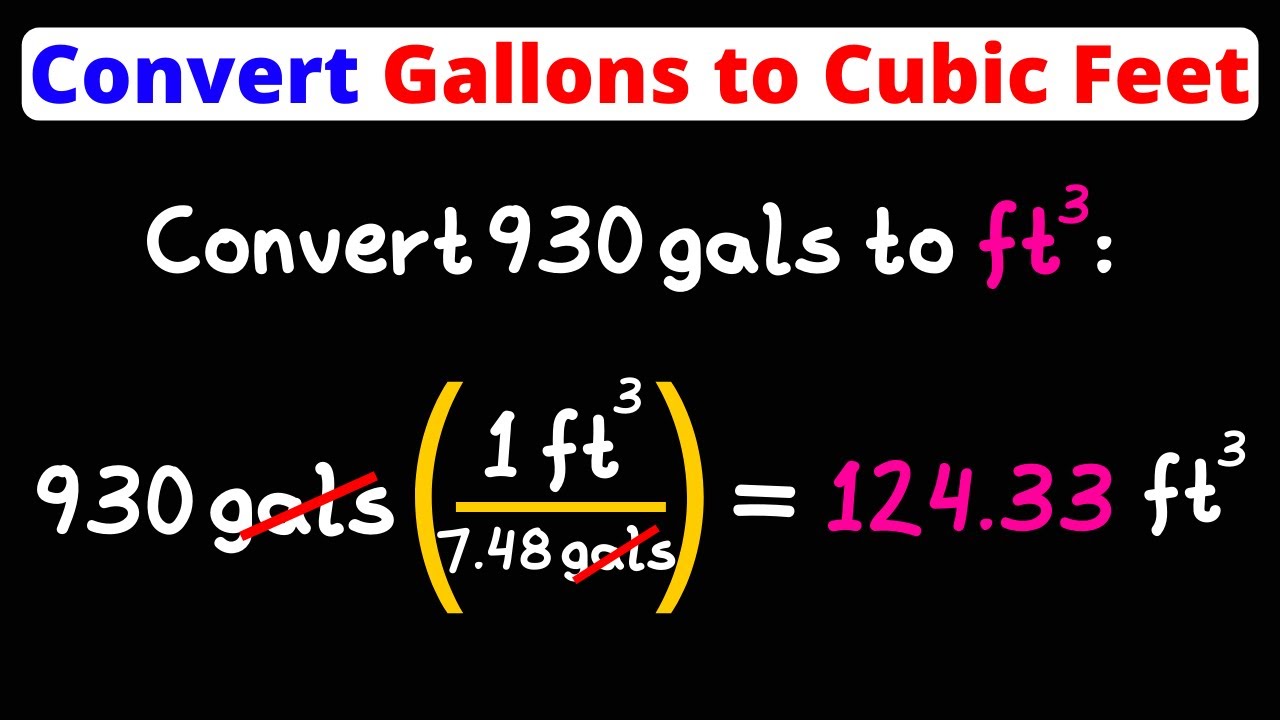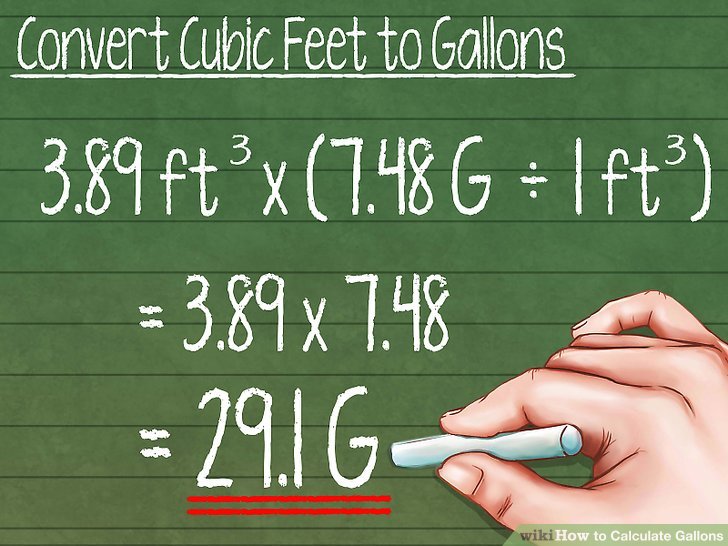How to Convert Gallons to Cubic Feet

Converting between different units of measurement is a common task in various fields, from cooking and baking to engineering and construction. Understanding how to convert gallons to cubic feet is especially useful when dealing with volumes of liquid or measuring spaces, ensuring accurate calculations and precise measurements.
Understanding Gallons and Cubic Feet

Gallons and cubic feet are units of measurement used to quantify volume. While gallons are commonly used to measure liquid volumes, such as the capacity of a water tank or a fuel tank, cubic feet are more often associated with measuring the volume of three-dimensional spaces, like a room or a storage container.
The relationship between gallons and cubic feet is not arbitrary. It is based on the definition and properties of each unit. A gallon is a unit of volume in the imperial and US customary systems, with one US gallon being equivalent to 231 cubic inches, while one imperial gallon is equivalent to 277.42 cubic inches.
On the other hand, a cubic foot is a unit of volume in the imperial and US customary systems as well, representing the volume of a cube with each side measuring one foot in length. One cubic foot is equivalent to 1,728 cubic inches.
The Conversion Factor

To convert gallons to cubic feet, we need to establish the conversion factor, which is a ratio that relates the two units. This factor allows us to make accurate conversions and ensure that the volume remains consistent despite the change in units.
The conversion factor between gallons and cubic feet is based on the relationship between cubic inches and gallons. As mentioned earlier, one US gallon is equivalent to 231 cubic inches, and one cubic foot is equivalent to 1,728 cubic inches. By setting up a ratio, we can determine the conversion factor:
| 1 US Gallon | 231 Cubic Inches |
|---|---|
| 1 Cubic Foot | 1,728 Cubic Inches |

Solving for the conversion factor, we get:
Conversion Factor = (1 Cubic Foot) / (231 Cubic Inches per Gallon)
This gives us a conversion factor of approximately 0.0043337 cubic feet per gallon, which can be rounded to 0.004334 for practical use.
The Conversion Process
Now that we have the conversion factor, we can proceed with the conversion from gallons to cubic feet. The process involves multiplying the volume in gallons by the conversion factor to obtain the equivalent volume in cubic feet.
Mathematically, the conversion can be represented as:
Cubic Feet = Gallons × Conversion Factor
Let's consider an example. If we have a water tank with a capacity of 10 gallons, we can calculate the volume in cubic feet as follows:
Cubic Feet = 10 Gallons × 0.004334 Cubic Feet per Gallon
Cubic Feet = 0.04334 Cubic Feet
So, a 10-gallon water tank has a volume of approximately 0.04334 cubic feet.
Practical Applications
The ability to convert gallons to cubic feet has various practical applications in different industries. Here are a few examples:
Construction and Architecture
In construction and architecture, converting gallons to cubic feet is crucial when estimating the volume of liquid storage tanks, pools, or reservoirs. It helps ensure that the structural design can accommodate the intended capacity and provides a basis for calculating the required materials and costs.
Fuel Efficiency and Transportation
For transportation and logistics, especially in the shipping and aviation industries, understanding the conversion between gallons and cubic feet is essential. It allows for accurate calculations of fuel capacity and ensures that vehicles or aircraft can meet their fuel requirements for long-distance journeys.
Environmental Monitoring
In environmental monitoring and conservation efforts, converting gallons to cubic feet is vital for assessing water usage and managing resources effectively. It helps in understanding the volume of water consumed, discharged, or stored, enabling better decision-making for sustainable practices.
Precision and Accuracy

When working with conversions, precision and accuracy are of utmost importance. Using the correct conversion factor and performing calculations with attention to detail are essential to avoid errors and ensure reliable results.
In the example above, we rounded the conversion factor to four decimal places (0.004334) to provide a practical and precise value. However, for more precise calculations, especially in scientific or engineering contexts, it is recommended to use the exact conversion factor or consult reference materials for the most accurate values.
Common Conversion Scenarios
Here are a few common scenarios where converting gallons to cubic feet might be necessary:
- Determining the volume of a swimming pool and calculating the required chemicals for maintenance.
- Estimating the fuel capacity of a vehicle or aircraft and planning for refueling stops.
- Calculating the volume of a storage tank for industrial processes or chemical storage.
- Assessing the water usage in a household or commercial building for conservation initiatives.
- Understanding the capacity of a septic tank or waste management system.
Conclusion
Converting gallons to cubic feet is a valuable skill for anyone dealing with volume measurements. By understanding the conversion factor and following a simple multiplication process, we can accurately convert between these units. Whether it’s for construction, transportation, environmental monitoring, or everyday applications, this conversion ensures precision and facilitates better decision-making in various fields.
How accurate is the conversion factor for gallons to cubic feet?
+The conversion factor for gallons to cubic feet is based on the definition of these units and is highly accurate. However, for precise calculations, especially in critical applications, it is advisable to use the exact conversion factor or consult reliable sources for the most accurate values.
Can I use this conversion for both US and imperial gallons?
+Yes, the conversion factor provided is applicable to both US and imperial gallons. However, it’s important to note that the conversion factor for imperial gallons is slightly different, as one imperial gallon is equivalent to approximately 0.00454609 cubic feet. Ensure you use the appropriate conversion factor based on the specific gallon measurement you are working with.
Are there any practical tips for estimating conversions without a calculator?
+Yes, a simple rule of thumb for estimating conversions without a calculator is to remember that one gallon is approximately equal to 0.134 cubic feet. This estimation can be useful for quick, rough calculations, but for precise results, it’s best to use the exact conversion factor or a calculator.



